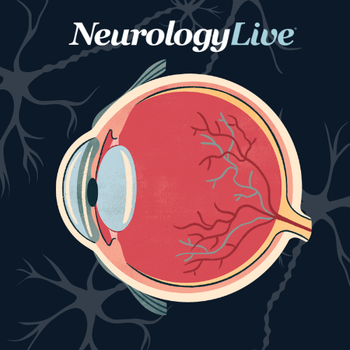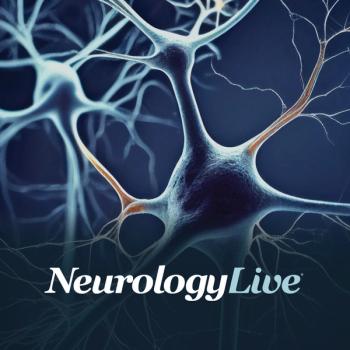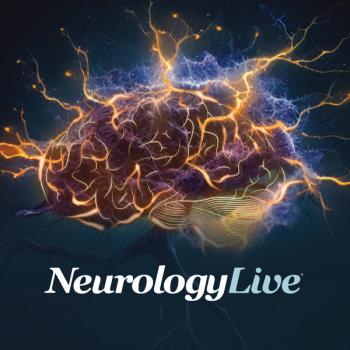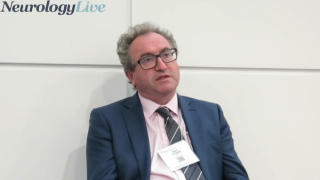
NMOSD
Latest News

Latest Videos

CME Content
More News

The professor of neurology at Mayo Clinic talked about the need for comprehensive testing, careful consideration of criteria for diagnosis, and effective treatment in MOG antibody-associated disease.

The professor of neurology at Mayo Clinic discussed the importance of standardizing MOG- antibody testing techniques and the need for effective treatments in patients living with MOGAD. [WATCH TIME: 3 minutes]

In comparison to previously approved treatments like satralizumab and inebilizumab, ravulizumab-treated patients performed significant better on outcomes of first relapse and time to first relapse.

Ravulizumab reduced NfL levels in cerebrospinal fluid and serum whereas eculizumab showed no change in NfL when compared with placebo.

Satralizumab, an IL-6 receptor inhibitor, shows promise in reducing infection rates compared to historical data.

Between those with NMOSD and NAION, the data showed differences in disc edema, peripapillary nerve fiber layer thickening, vision loss, and the symptoms that preceded vision loss.

Newly approved treatments in neuromyelitis optica spectrum disorder have shown efficacy in recent years, yet unaddressed concerns voiced by clinicians and patients living with the disease remain.

The approval is supported by phase 3 data which showed ravulizumab-cwvz met its primary end point of time to first on-trial relapse, with no relapses observed in 58 patients with NMOSD over a median treatment duration of 73 weeks.

A recent analysis revealed a significant association between neuromyelitis optica spectrum disorder and connective tissue disease in patients diagnosed or suspected with Sjogren syndrome.

A recent study highlighted the potential of susceptibility-weighted image features as imaging biomarkers to differentiate patients with multiple sclerosis from those with neuromyelitis optica spectrum disorder.

Patients with aquaporin-4-IgG-seropositive neuromyelitis optica spectrum disorder exhibited higher urine pH compared to those with multiple sclerosis and healthy controls.

Patients with non-P42 MOG-IgG in MOGAD had over three times higher risk of relapsing course than those with P42 MOG-IgG.

As part of our monthly clinician spotlight, NeurologyLive® highlighted rare disease medicine expert Paula Barreras, MD, a physician neurologist and neuroimmunologist at Cedars Sinai Medical Center.

In recent news, Health Canada approved inebilizumab for adult patients with neuromyelitis optica spectrum disorder who are anti-aquaporin-4 antibody positive, using results from the N-MOmentum trial as the basis for the approval.

A recent analysis revealed a reduction in regulatory lymphocyte subsets in patients with NMOSD before tocilizumab therapy, with subsequent restoration to normal levels after 1 year treatment.

Study Reveals Significant Up-Regulation of Potentially Disease-Specific Long Noncoding RNAs in NMOSD
In a recent study, investigators observed a substantial up-regulation of long noncoding RNAs among patients with neuromyelitis optica spectrum disorder in comparison with heathy individuals.

Investigators identified practical guidelines for NMOSD management, emphasizing patient communication and targeted therapies, while providing recommendations for personalized approaches.

A recent analysis revealed patients with neuromyelitis optica spectrum disorder exhibited significantly lower vitamin D levels, suggesting a potential association with impaired immune tolerance in the disorder.

A recent study identified specific risk factors influencing readmission odds in patients with neuromyelitis optica spectrum disorder, contributing valuable insights for predictive algorithms and improved patient outcomes.

Patients with neuromyelitis optica spectrum disorder experienced poor sleep quality, indicating a significant contribution to the overall disease burden.

A recent study revealed that susceptibility-based imaging can effectively differentiate pediatric-onset multiple sclerosis from pediatric myelin oligodendrocyte glycoprotein antibody-associated disease.

A recent meta-analysis revealed significant differences in characteristic between patients with NMOSD and MS, highlighting the need for enhanced tools to differentiate between these diseases for early and accurate diagnosis.

A recent subgroup analysis of the N-MOmentum study revealed that inebilizumab had equal efficacy in reducing attacks among Asian and nonAsian patients with NMOSD, demonstrating its continued superiority over placebo.

Across 31 studies of patients with NMOSD, more than half of the patients included reported having sleep disturbances associated with their condition.

The physician neurologist and neuroimmunologist at Cedars Sinai Medical Center discussed RNDS 2023, an educational event for Spanish-speaking patients with rare neuroimmune disorders.







































